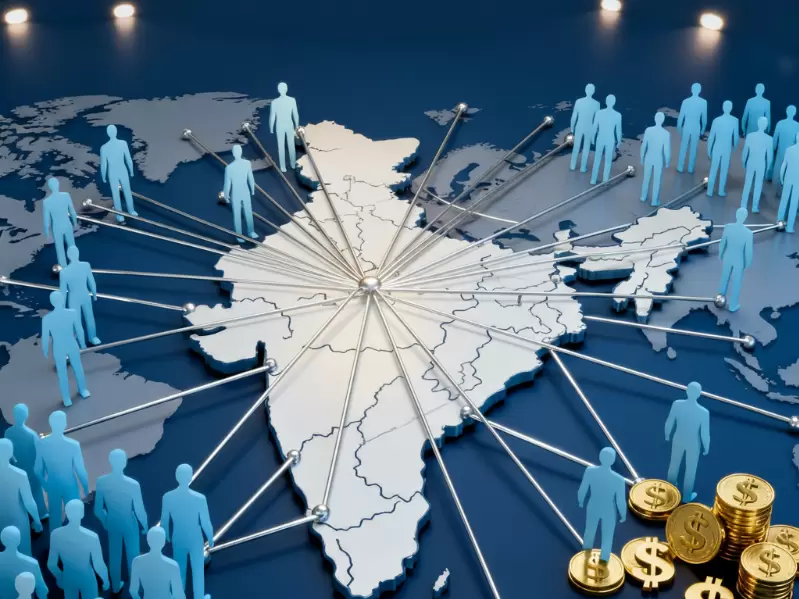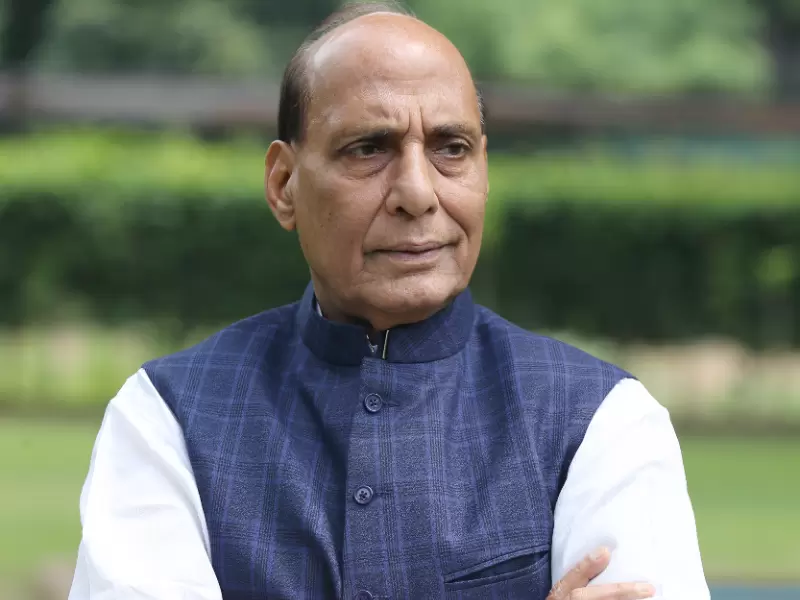India’s Next Play: Compete, Don’t Complain
External shocks leave India no choice: reform now, compete globally, and turn scale into prosperity
 Representative Image / Generated using AI
Representative Image / Generated using AI
In recent months, India has been tested by new U.S. tariffs, shifting supply chains, and the unflattering label of “tariff king.” Such shocks are painful but clarifying.
Unless India sheds protectionism, eases regulation, and strengthens competitiveness, it risks falling behind. This is not the moment to complain about unfairness—it is the moment to reform: to open markets, simplify rules, and compete on price, quality, and innovation. Pursued with conviction, these reforms can propel India into a more durable phase of growth, trade, and investment.
Tariffs are the place to begin. According to the World Trade Organization’s World Tariff Profiles 2024, India’s Most Favoured Nation (MFN) simple average tariff stands at 16.2 percent, with 36.7 percent for agriculture and 13.0 percent for non-agricultural goods. The trade-weighted average, 7.7 percent, still exceeds that of competitors such as Vietnam (5.1 percent).
As Montek Singh Ahluwalia, former Deputy Chairman of the Planning Commission, has argued, “Our tariffs are much higher than most other developing countries. I have consistently said our tariffs are too high and they should be reduced in our own interest.” Lowering duties is not about appeasing others—it is about cutting costs and spurring domestic efficiency.
Regulation is the next frontier. The central government reports cutting 43,000 compliances and decriminalizing 183 provisions across 42 laws under the Jan Vishwas (Amendment) Act, 2023. Yet the web of rules remains dense. Manish Sabharwal, Co-founder of TeamLease Services, notes, “There are 67,000 compliances, 6,700 filings, and 26,410 ways for an employer to go to jail. This regulatory cholesterol doesn’t bother big companies.” Smaller firms, however, bear the brunt—trapped in paperwork that stifles innovation and formal growth. Without deeper reform, India’s entrepreneurial energy will remain locked behind layers of procedural friction.
Quality is another neglected frontier. Tariff cuts and deregulation may open doors, but without world-class standards, demand will not hold. Quality is not just about machinery—it is about culture, training, and the discipline of competition. In protected markets, weak standards can survive; in global markets, there is no such cushion. Japan’s post-war transformation, guided by Deming, Juran, and Crosby’s methodologies showed how continuous improvement and process control could rebuild industries from ruin.
Also Read: India eyes $3.6 billion defence export milestone by March 2026, says Rajnath Singh
For India, embracing that philosophy means moving from compliance to competence—from meeting minimum standards to setting global ones. As Anand Mahindra has said, “There is no room for any complacency; continuous improvement will continue to be our mantra.” Scale without quality is hollow. Firms that cannot compete must adapt or exit; that is the price of excellence.
Infrastructure and logistics remain another hidden tax. Industry estimates suggest India’s logistics costs have fallen to 7.8–8.9 percent of GDP, down from 13–14 percent a decade ago, but still above the global best-practice range of 6–7 percent. Sanjeev Sanyal, Member of the Economic Advisory Council to the Prime Minister, has been candid: “We will have to keep investing in our own infrastructure and ease of doing business … It requires effort, and we are putting in that effort.” Cutting just one percentage point could save tens of billions annually and boost exporter margins.
Yet infrastructure alone cannot secure competitiveness; stability in rules and policy is equally vital. Sudden tariff shifts unsettle investors and supply-chain planners. Stability must go hand in hand with labor-law reform, contract enforcement, and a genuine rule of law that protects enterprises from bureaucratic overreach. The next phase must also address corruption and opaque regulation that deter both domestic and foreign capital.
The late Charlie Munger, Vice-Chairman of Berkshire Hathaway, once said he would not invest in India because there were “too many rules and too much bureaucracy.” His warning captures a global perception India must change—moving from a maze of controls to a climate of clarity and confidence. The reward for such reform would be immense: an economy that attracts capital, empowers entrepreneurs, and converts growth into prosperity.
The International Monetary Fund emphasizes that durable growth depends on structural reform and institutional predictability. A 2024 IMF working paper estimated that reallocating labor and capital into more dynamic sectors could raise India’s growth by 0.2 to 0.5 percentage points over the medium term.
Progress must also be measured not just by GDP, but by income per person. India’s nominal GDP is nearing US $4 trillion, ranking fifth globally—behind the United States (US $28.8 trillion), China (US $18.5 trillion), Germany (US $4.5 trillion), and Japan (US $4.4 trillion) (IMF 2025). Yet per capita income—about US $2,900—tells a starkly different story.
The average American earns US $85,000, the Chinese US $13,300, the Germans US $53,700, and the Japanese US $36,800. Closer home, Singapore (~US $92,900), South Korea (~US $34,600), and Taiwan (~US $34,400)have surged ahead. The contrast underscores a simple truth: scale is not the same as prosperity. Bridging this gap is not just an aspiration—it is a national imperative, and the defining measure of Viksit Bharat: a nation that grows not only in size but in the prosperity of its people.
Tariff turmoil should therefore be viewed as an accelerant, not an excuse. Amitabh Kant, former CEO of NITI Aayog, has called this a “once-in-a-generation opportunity” to rationalize duties and modernize trade facilitation. Whatever one thinks of U.S. actions, the lesson is clear: use external pressure to drive internal reform. Crises of this kind are rare—but when seized, they can change a nation’s trajectory, just as the 1991 balance-of-payments crisis forced India to liberalize.
Reform is not costless. Some incumbents will lose protection; tariff revenues may dip. But the alternative—missing the global reordering of supply chains—is far worse. Cutting tariffs to competitive levels, pruning compliance through sunset clauses and one-in-two-out rules, digitizing customs, and professionalizing rule-making would help India build a reputation for predictable, rules-based openness—the true foundation of competitiveness.
That is precisely what American companies are looking for as they craft their India strategy—and it reflects the same principle that underpinned President Trump’s call for reducing tariffs that restrict U.S. firms from doing business in India. Predictability and openness are not concessions; they are the preconditions for India’s rise as a trusted manufacturing hub.
India holds great promise, with the talent, capital, and ambition to play a larger role in global value chains. But promise alone is not performance. Smaller economies such as Bangladesh and Vietnam have shown how consistent labor policy and export-oriented manufacturing can transform prospects.
Vietnam’s exports exceed US $370 billion annually, nearly matching India’s despite its far smaller size. Bangladesh, driven by its apparel industry, ships US $55 billion a year—proof that competitiveness, not scale, defines success. India can learn from these examples: simplify, specialize, and scale with discipline. It can either hunker behind tariff walls as the world reorganizes—or unleash its entrepreneurial DNA to claim its rightful place in global production networks. Standing still is not an option.
India’s Reform North Star: Compete at Home to Win Abroad.
Gopal Khanna is Founder and Chair of Healthcare AI Institute. Rasita is a political commentator and director at the American Indo-Pacific Forum.
(The views and opinions expressed in this article are those of the author and do not necessarily reflect the official policy or position of New India Abroad)
ADVERTISEMENT
ADVERTISEMENT
E Paper
Video



1761586284.png) Gopal Khanna
Gopal Khanna Rasita Vishnuram
Rasita Vishnuram 













Comments
Start the conversation
Become a member of New India Abroad to start commenting.
Sign Up Now
Already have an account? Login